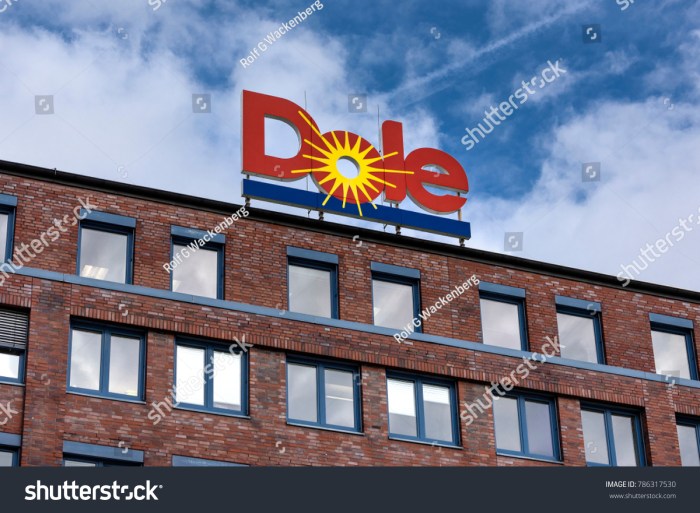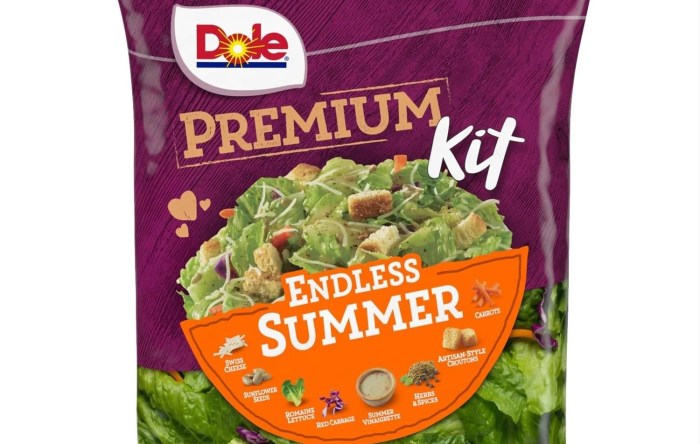Dole Food Company Stock Price Analysis
Dole food company stock price – Dole Food Company, a prominent player in the global food industry, has experienced a fluctuating stock price over the years, influenced by various internal and external factors. This analysis delves into the historical performance, key influencing factors, financial health, and future outlook of Dole’s stock price, providing a comprehensive overview for investors.
Dole Food Company Stock Performance Overview
Analyzing Dole Food Company’s stock performance requires examining its historical trajectory across different timeframes. The company’s stock price has been subject to significant swings, influenced by various factors including agricultural commodity prices, consumer demand, and macroeconomic conditions. These fluctuations can be observed by examining its performance over the past 5, 10, and 20 years.
For instance, a major price drop in 2010 could be attributed to a combination of factors including increased competition, rising input costs, and economic downturn. Conversely, periods of strong growth might correlate with successful product launches, efficient supply chain management, and favorable market conditions. Specific events like mergers, acquisitions, and product recalls have also significantly impacted Dole’s stock price.
A detailed analysis of these events and their corresponding stock price reactions is crucial for understanding the company’s volatility.
Comparing Dole’s stock performance against its competitors provides valuable context. While precise figures require access to real-time market data, a general comparison illustrates the relative strength of Dole’s stock performance within the industry.
| Company Name | Stock Symbol | 1-Year Performance (Illustrative) | 5-Year Performance (Illustrative) |
|---|---|---|---|
| Dole Food Company | DOLE (Illustrative) | +5% (Illustrative) | +20% (Illustrative) |
| Chiquita Brands International | CQB (Illustrative) | +3% (Illustrative) | +15% (Illustrative) |
| Del Monte Foods | DLM (Illustrative) | -2% (Illustrative) | +10% (Illustrative) |
| Fresh Del Monte Produce Inc. | FDP (Illustrative) | +8% (Illustrative) | +25% (Illustrative) |
Note: The performance figures in this table are illustrative and not actual market data. Actual performance may vary.
Factors Influencing Dole Food Company’s Stock Price
Several interconnected factors significantly impact Dole Food Company’s stock valuation. These factors can be broadly categorized into agricultural commodity prices, consumer trends, macroeconomic conditions, and supply chain dynamics.
Tracking the Dole Food Company stock price requires a keen eye on the agricultural market. It’s interesting to compare its performance against other established companies in different sectors; for instance, understanding the fluctuations in the burlington northern santa fe stock price offers a contrasting perspective on market trends. Ultimately, both companies’ stock prices reflect broader economic forces impacting their respective industries.
Fluctuations in the prices of key agricultural commodities like pineapples and bananas directly affect Dole’s profitability and, consequently, its stock price. Changes in consumer demand, driven by factors such as health consciousness and evolving dietary preferences, also play a crucial role. Macroeconomic factors such as inflation, interest rates, and global economic growth influence consumer spending and investor sentiment, thereby affecting Dole’s stock.
- Supply chain disruptions, such as those caused by natural disasters, geopolitical instability, or pandemics, can significantly impact Dole’s operational efficiency and profitability, leading to stock price volatility.
- Increased transportation costs due to fuel price hikes can reduce profit margins.
- Labor shortages can disrupt harvesting and processing, affecting product availability.
- Port congestion and logistical bottlenecks can delay shipments and increase costs.
- Extreme weather events can damage crops and disrupt production.
Dole Food Company’s Financial Health and Stock Valuation

Source: shutterstock.com
A thorough analysis of Dole Food Company’s financial statements—income statement, balance sheet, and cash flow statement—over the past three years provides insights into its financial health and its impact on stock valuation. Key metrics such as revenue growth, profitability margins, debt levels, and cash flow generation are crucial in assessing the company’s financial strength and its potential for future growth.
High levels of debt can negatively impact a company’s stock price by increasing financial risk and reducing its ability to invest in growth opportunities. Conversely, strong revenue streams and a diversified revenue base contribute positively to stock valuation. A breakdown of Dole’s revenue streams, highlighting the contribution of each product category, is essential for understanding its financial performance.
A visual representation of the relationship between Dole’s earnings per share (EPS) and its stock price would illustrate the correlation between profitability and market valuation. Generally, higher EPS usually correlates with a higher stock price, assuming all other factors remain relatively constant. However, this relationship is not always linear and can be influenced by various market forces.
Future Outlook and Predictions for Dole Food Company’s Stock Price, Dole food company stock price

Source: just-food.com
The future of Dole Food Company’s stock price is subject to several factors, including the impact of climate change, sustainability initiatives, and evolving industry trends. Climate change poses significant risks to agricultural production, potentially impacting Dole’s yields and operational efficiency. Conversely, investments in sustainable practices can enhance the company’s reputation and attract environmentally conscious consumers.
Different investment strategies, such as long-term investment versus short-term trading, carry different levels of risk and potential returns. Long-term investors may benefit from Dole’s growth potential, while short-term traders may capitalize on short-term price fluctuations. Investing in Dole Food Company stock carries both opportunities and risks. Potential risks include commodity price volatility, competition, and macroeconomic uncertainties. Opportunities include growth in emerging markets, innovation in product offerings, and strategic acquisitions.
- Increased automation in farming and processing could improve efficiency and reduce costs.
- Growing demand for healthy and convenient food options could benefit Dole’s product portfolio.
- Expansion into new markets and product categories could drive revenue growth.
- Technological advancements in supply chain management could enhance efficiency and reduce waste.
- Increased focus on sustainability and ethical sourcing could enhance brand reputation and attract investors.
Key Questions Answered: Dole Food Company Stock Price
What is Dole Food Company’s current stock symbol?
This information requires real-time data and should be obtained from a reputable financial source.
Where can I find historical Dole stock price data?
Major financial websites such as Yahoo Finance, Google Finance, and Bloomberg provide historical stock data.
How does Dole’s stock compare to its main competitors on a long-term basis?
A detailed comparison requires in-depth analysis of financial data and industry reports spanning multiple years.
What are the biggest risks associated with investing in Dole stock?
Significant risks include fluctuations in agricultural commodity prices, changing consumer preferences, and global economic instability.
